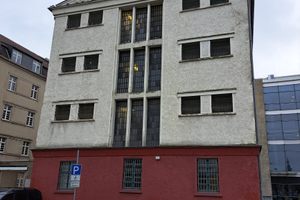
The plain building right behind Dortmund’s central train station hides many secrets. Established as a police station, it was turned into a Gestapo prison during the Nazi rule. Now the building is a memorial museum on resistance and persecution.
The police headquarters opened in 1906, and since it was located on Steinstraße, the locals soon started calling the building Steinwache (stone guard). In the 1920s, the police added a five-story prison building next to the initial headquarters. After the Nazis came to power in the 1930s, the Gestapo (the Nazi regime’s secret police) took over the premises, using the cells mainly for political prisoners and adding several rooms for interrogation and torture.
Nicknamed Die Hölle von Westdeutschland (“the hell of Western Germany”), more than 66,000 people in total were imprisoned in Steinwache from 1933 to 1945. In the mid-to-late 1930s, the inmates were mostly social democratic and communist opposition members, but during the war years, the majority of prisoners were forced laborers, especially from Eastern Europe.
During the notorious Kristallnacht in November 1938, the Gestapo arrested most of the working-age Jewish males living in Dortmund and imprisoned them in Steinwache. From there, most of them were sent to Sachsenhausen concentration camp.
Although most of Dortmund’s city center was destroyed during the Allied bombings, Steinwache was relatively unscathed. In the 1980s, work was initiated to transform the prison into a memorial site. Since 1992, it has hosted a permanent exhibition called “Widerstand und Verfolgung in Dortmund 1933-1945” (“Resistance and Persecution in Dortmund 1933-1945”). Former cells were turned into exhibition halls exhibiting photographs and texts about the regime’s persecution and numerous attempts to oppose it.

Post a Comment